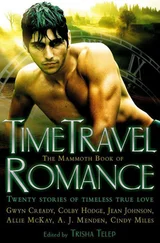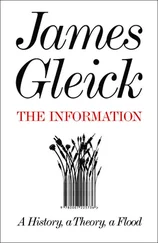James Gleick - Time Travel
Здесь есть возможность читать онлайн «James Gleick - Time Travel» — ознакомительный отрывок электронной книги совершенно бесплатно, а после прочтения отрывка купить полную версию. В некоторых случаях можно слушать аудио, скачать через торрент в формате fb2 и присутствует краткое содержание. Год выпуска: 2016, Издательство: Knopf Doubleday Publishing Group, Жанр: Старинная литература, на английском языке. Описание произведения, (предисловие) а так же отзывы посетителей доступны на портале библиотеки ЛибКат.
- Название:Time Travel
- Автор:
- Издательство:Knopf Doubleday Publishing Group
- Жанр:
- Год:2016
- ISBN:нет данных
- Рейтинг книги:5 / 5. Голосов: 1
-
Избранное:Добавить в избранное
- Отзывы:
-
Ваша оценка:
- 100
- 1
- 2
- 3
- 4
- 5
Time Travel: краткое содержание, описание и аннотация
Предлагаем к чтению аннотацию, описание, краткое содержание или предисловие (зависит от того, что написал сам автор книги «Time Travel»). Если вы не нашли необходимую информацию о книге — напишите в комментариях, мы постараемся отыскать её.
Time Travel — читать онлайн ознакомительный отрывок
Ниже представлен текст книги, разбитый по страницам. Система сохранения места последней прочитанной страницы, позволяет с удобством читать онлайн бесплатно книгу «Time Travel», без необходимости каждый раз заново искать на чём Вы остановились. Поставьте закладку, и сможете в любой момент перейти на страницу, на которой закончили чтение.
Интервал:
Закладка:
An immense pride was buoying us up, because we felt ourselves alone at that hour, alone, awake, and on our feet, like proud beacons or forward sentries against an army of hostile stars…. “Andiamo,” I said. “Andiamo, amici!” …And like young lions we ran after death, [etc.]
The manifesto included eleven numbered items. Number one: “We intend to sing the love of danger…” Number four was about fast cars: “We affirm that the world’s magnificence has been enriched by a new beauty: the beauty of speed. A racing car whose hood is adorned with great pipes, like serpents of explosive breath.” The futuristi created just one of the many twentieth-century movements that proudly defined themselves as avant-garde—eyes fixed forward, escaping the past, striding into the future.
When Asimov used the word, he meant something more basic: a sense of the future as a notional place, different, and perhaps profoundly different, from what has come before. Through most of history, people could not see the future that way. Religions had no particular thought for the future; they looked toward rebirth, or eternity—a new life after death, an existence outside of time. Then, finally, humanity crossed a threshold of awareness. People began to sense that there was something new under the sun. Asimov explains:
Before we can have futurism, we must first recognize the existence of the future in a state that is significantly different from the present and the past. It may seem to us that the potential existence of such a future is self-evident, but that was most definitely not so until comparatively recent times.
And when did that happen? It began in earnest with the Gutenberg printing press, saving our cultural memory in something visible, tangible, and shareable. It reached critical velocity with the Industrial Revolution and the rise of the machine—looms and mills and furnaces, coal and iron and steam—creating, along with so much else, a sudden nostalgia for the apparently vanishing agrarian way of life. Poets led the way. “Hear the voice of the Bard!” William Blake implored, “Who Present, Past, and Future sees.” Some people liked progress more than did Mr. Dark Satanic Mills, but either way, before futurism could be born, people had to believe in progress. Technological change had not always seemed like a one-way street. Now it did. The children of the Industrial Revolution witnessed vast transformations within their lifetimes. To the past there was no return.
Surrounded by advancing machinery, Blake blamed, more than anyone else, Isaac Newton—the blinkered rationalist imposing his new order *5—but Newton himself had not believed in progress. He studied a great deal of history, mostly biblical, and if anything he supposed that his own era represented a fall from grace, a tattered remnant of past glories. When he invented vast swaths of new mathematics, he thought he was rediscovering secrets known to the ancients and later forgotten. His idea of absolute time did not subvert his belief in eternal Christian time. Historians studying our modern notion of progress have observed that it began to develop in the eighteenth century, along with our modern notion of history itself. We take our sense of history for granted—our sense of “historical time.” The historian Dorothy Ross defines it as “the doctrine that all historical phenomena can be understood historically, that all events in historical time can be explained by prior events in historical time.” (She calls this “a late and complex achievement of the modern West.”) It seems so obvious now: we build upon the past.
So, as the Renaissance receded, a few writers began trying to imagine the future. Besides Madden with his Memoirs of the Twentieth Century and Mercier with his dream of the year 2440, others attempted imaginative fiction about societies to come, which can, in hindsight, be called “futuristic,” though that word did not register in English until 1915. They were all defying Aristotle, who wrote, “Nobody can narrate what has not yet happened. If there is narration at all, it will be of past events, the recollection of which is to help the hearers to make better plans for the future.”
The first true futurist in Asimov’s sense of the word was Jules Verne. In the 1860s, as railroad trains chugged across the countryside and sailing ships gave way to steam, he imagined vessels traveling under the sea, across the skies, to the center of the earth, and to the moon. We would say he was a man ahead of his time—he had an awareness, a sensibility, suited to a later era. Edgar Allan Poe was ahead of his time. The Victorian mathematician Charles Babbage and his protégé Ada Lovelace, forerunners of modern computing, were ahead of their time. Jules Verne was so far ahead of his time that he could never even find a publisher for his most futuristic book, Paris au XXe siècle, a dystopia featuring gas-powered cars, “boulevards lit as brightly as by the sun,” and machine warfare. The manuscript, handwritten in a yellow notebook, turned up in 1989, when a locksmith cracked open a long-sealed family safe.
The next great futurist was Wells himself.
We are all futurists now.
*1 Per the Oxford English Dictionary. One precursor, though: in 1866, an English travel writer concluding a railway journey through Transylvania mused in the Cornhill Magazine, “This charm of traveling would become perfect if we could travel in time as well as in space—…take a fortnight in the fifteenth century, or, still more pleasant, a leap into the twenty-first. It is possible to accomplish this object more or less in imagination.”
*2 Of course the century was turning only per the Christian calendar, and even so, in 1800, the consensus was barely firm. France, still in the throes of its revolution, was running on a new calendar of its own, le calendrier républicain français, so it was the year 9. Or 10. This Republican year had a neat 360 days, organized into months with new names, from vendémiaire to fructidor. Napoleon dispensed with that shortly after being crowned emperor on 11 frimaire, year 13.
*3 Evidently it was not easy to translate. Current Literature magazine in New York reported in 1899, “The ‘Mercure de France’ is about to begin publishing a translation of Mr. Wells’ Time Machine. The translator finds the title difficult to put into French. ‘Le Chronomoteur,’ ‘Le Chrono Mobile,’ ‘Quarante Siècles à l’heure,’ and ‘La Machine à Explorer le Temps’ are some of the suggestions….”
*4 Jarry explains: “The Present is non-existent, a tiny fraction of a phenomenon, smaller than an atom. The physical size of an atom is known to be 1.5 x 10 –8centimeters in diameter. No one has yet measured the fraction of a solar second that is equal to the Present.”
*5 “May God us keep / From Single vision & Newton’s sleep!”
THREE
Philosophers and Pulps
“Time travel?! You expect me to believe such nonsense?”
“Yes, it is a difficult concept, isn’t it.”
—Douglas Adams (“The Pirate Planet,” Doctor Who, 1978)
TIME TRAVEL AS DESCRIBED by Wells and his many heirs is everywhere now, but it does not exist. It cannot. In saying so, it occurs to me that I’m Filby.
“But the thing’s a mere paradox,” says the Editor.
“It’s against reason,” says Filby.
Critics of the 1890s took the same view. Wells knew they would. When his book was finally published in the spring of 1895— The Time Machine: An Invention, sold in New York by Henry Holt (75¢) and in London by William Heinemann (2/6)—reviewers admired it for a good tale: a “fantastic story”; “shocker of no ordinary kind”; “ tour de force of ghastly imaginings”; “distinctly above the average of such fanciful works”; and “worth reading if you like to read impossible yarns” (that last from the New York Times ). They noted the apparent influence of the Dark Romantics, Edgar Allan Poe and Nathaniel Hawthorne. One sniffed, “We have some difficulty in discerning the exact utility of such excursions into futurity.”
Читать дальшеИнтервал:
Закладка:
Похожие книги на «Time Travel»
Представляем Вашему вниманию похожие книги на «Time Travel» списком для выбора. Мы отобрали схожую по названию и смыслу литературу в надежде предоставить читателям больше вариантов отыскать новые, интересные, ещё непрочитанные произведения.
Обсуждение, отзывы о книге «Time Travel» и просто собственные мнения читателей. Оставьте ваши комментарии, напишите, что Вы думаете о произведении, его смысле или главных героях. Укажите что конкретно понравилось, а что нет, и почему Вы так считаете.












